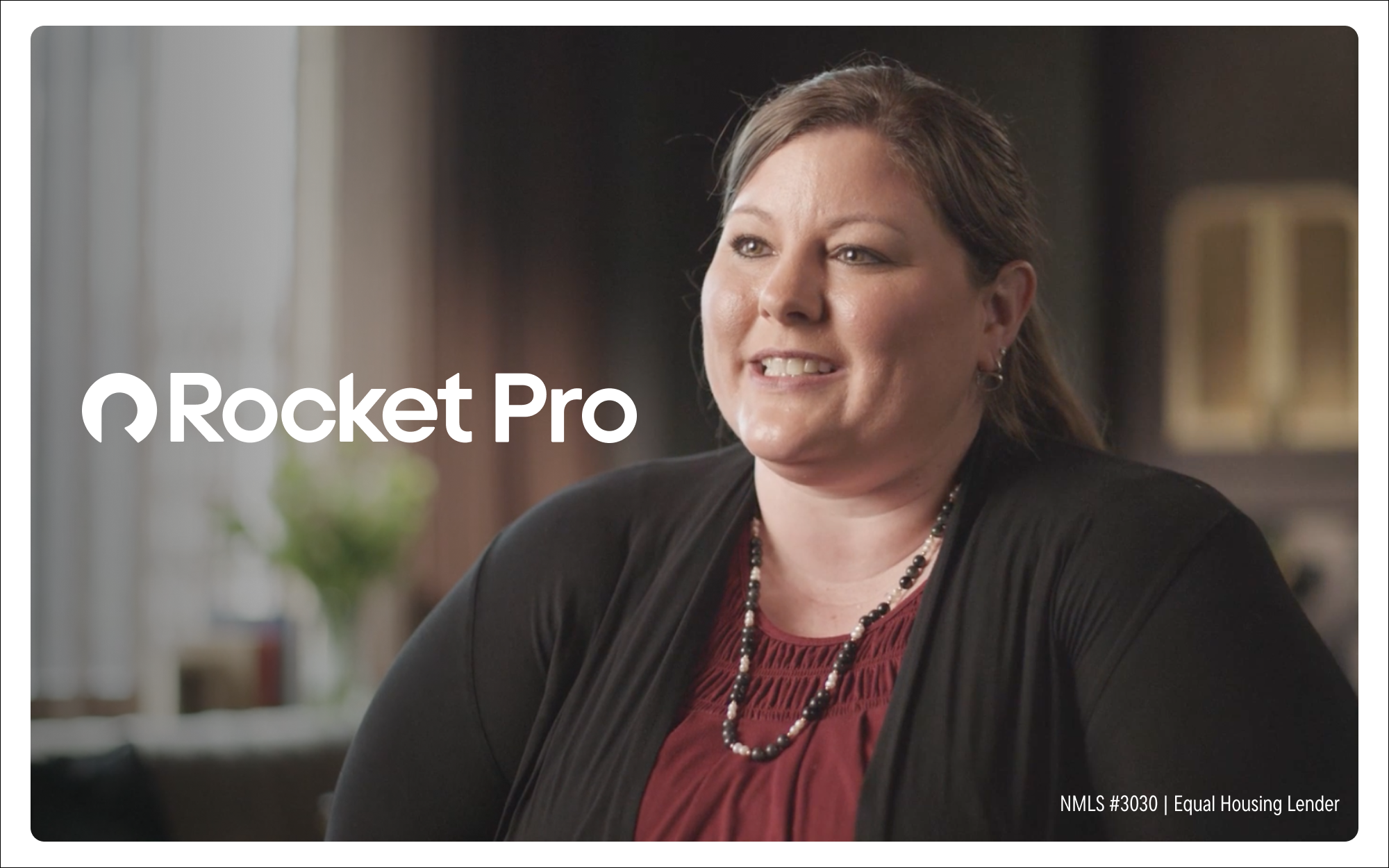Higher interest rates are discouraging many consumers from taking out new mortgages or refinancing existing ones—but community banks are taking steps to fill their pipelines in innovative ways while they wait for the cycle to trend upward again.
Making Mortgages Happen Amid Higher Interest Rates
March 06, 2024 / By Beth Mattson-Teig
Higher interest rates are discouraging many consumers from taking out new mortgages or refinancing existing ones—but community banks are taking steps to fill their pipelines in innovative ways while they wait for the cycle to trend upward again.
Mortgage lenders are hoping to shake off a slow cycle of originations and get back to the basics of helping customers finance new home purchases.
Mortgage production has dropped due to what some lenders are calling a “perfect storm” of higher interest rates, persistently high home prices and limited for-sale inventory.
“Current homeowners are just not motivated to sell their homes when they are sitting on a 3% mortgage,” says Sheryl Gee, vice president, secondary mortgage administrator at $1.1 billion-asset Benchmark Community Bank in Kenbridgel, Va.
In addition, higher prices have moved the dream of homeownership beyond the grasp of most first-time buyers. They simply can’t afford it, Gee says.
But like many community banks across the country, Benchmark Community Bank is leaning in to help homebuyers, even if that means working to put them in a better position to buy a home not today but at some point in the future. “Our approach is to listen to our customer to make sure we understand their needs and long-term goals,” Gee says. “It’s not about rushing to put them into a loan product to get the deal done.”
Tailored customer service
The challenging housing finance market plays to the strengths of community banks, which are built on a solid foundation of relationship‑based banking.
“Community banks are really great at working with customers to find a product that works well for them while offering a competitive rate,” says Timothy Roy, assistant vice president, housing finance policy at ICBA.
In fact, demand that seemed to be shifting more in favor of nonbank digital lenders is now shifting back in the favor of banks. Data for 2022 mortgage originations shows that banks increased their market share from 32.6% to 39.7% of funded loans, while nonbank mortgage lenders lost ground, according to S&P Global Market Intelligence.
Consumers that, perhaps, would have gone to a nonbank lender are now going to their community banker because they have questions about how to best structure their loan or find the right loan product.
“One of the best aspects of a community bank is that option to be able to go in and speak to a banker who can listen to what the customer needs or desires and be able to offer numerous options,” says Roy. Most community banks also offer the convenience and efficiency of digital mortgages, while still providing the personal service that customers want and need in a more challenging homebuying market, he adds.
Back to mortgage basics
One of the positives of a slower mortgage market is that mortgage teams have had time to catch their breath, regroup and get back to the basics of providing great loan products and great service to their customers.
One of the things $3 billion-asset First Premier Bank did when the market started to slow in 2023 was increase its focus on education, both in terms of equipping its lenders with the tools and education to benefit borrowers. The community bank increased its participation in various events by nearly 50% in 2023, ranging from hosting or partnering in educational events around homeownership to attending trade shows for home builders.
“Everybody is working really hard to get those loans because there are fewer of them. We’re taking a look to see what we can do to help that client experience,” says Angela Beilke, vice president, mortgage banking manager at the Sioux Falls, S.D., community bank.
First Premier Bank is also looking at ways to improve its mortgage processes, from productivity to how to give a borrower the opportunity to lock in the best rate. “For example, if we can get a better rate if we lock for 45 days versus 60, that means our job has to be done within 23 days, and we have to close in 30 so that we can deliver that loan within the 45-day period,” notes Beilke.
The community bank’s mortgage lenders also recognize that buying a home is a big financial decision and that buyers worry that a potential problem could pop up before closing to derail the process.
“It [can be] stressful for them that whole time,” Beilke says. Talking through the plan and helping execute it matters, because it helps borrowers feel comfortable with their decision and the path forward, she adds.
“Customer service is everything,” agrees Gee. Mortgage lending is more than just getting a borrower to the closing table and completing a transaction. “We are a full-service bank, and our motto is we are ‘With you for life!’” she says. “Our loan officers care about their customers, and our goal in everything we do along the process is to provide them with the tools they need for successful homeownership.”
Prediction: Mortgage numbers will rise in 2024
Despite lingering uncertainty on the Fed’s rate policy in the coming year, industry forecasts for increased volume are more positive for this year and next.
Sources: 1 Fannie Mae Housing Forecast, November 2023 / 2 National Association of Realtors / 3 Mortgage Bankers Association
Robust menu of products
Two key factors to getting mortgage loans done in the current market are to offer a full suite of products and have a knowledgeable lending team to back up those products.
“You have to make sure you have all the products available that people are going to need, because everybody’s situation is different,” says Beilke.
In addition to conventional loans, First Premier Bank has traditionally been a large producer of government‑guaranteed mortgages, such as FHA, USDA, VA and programs offered through the South Dakota State Housing Authority.
The community bank also offers rate buydown products and is educating its team on various grant programs and first-time homebuyer programs available through the state housing authority, Federal Home Loan Bank, Fannie Mae and Freddie Mac.
Banks that are going to hold loans on their balance sheet have a bit more flexibility in their products and underwriting.
“Community banks are very cognizant of the risks when it comes to the loans they make, but their focus is on the customer,” says Roy. “They want to be flexible for the customer. They want to offer as many options as possible, while also keeping in mind safety and soundness of the loans they make for their portfolio business.”
“When volumes are lower, we’ve definitely seen significantly more complicated loan files. So, having our origination staff understand how to evaluate them and then figure out how to make them fit or work within the guidelines for Fannie Mae or Freddie Mac or FHA or VA has been a big emphasis of ours.”—Thomas Hazlett, New Market Bank
Leveraging market knowledge
Back in 2020 and 2021, when the mortgage industry was incredibly busy, a lot of new lenders jumped into this business.
According to Thomas Hazlett, senior vice president, mortgage lending at $190 million-asset New Market Bank in Lakeville, Minn., these lenders often only know how to originate loans in refinancing transactions. And frequently, when business slows, it will shift from a refinance market to a purchase one.
“When volumes are lower, we’ve definitely seen significantly more complicated loan files,” he says. “So, having our origination staff understand how to evaluate them and then figure out how to make them fit or work within the guidelines for Fannie Mae or Freddie Mac or FHA or VA has been a big emphasis of ours.”
Quick Stat
39.7%
Banks’ share of funded mortgage loans in 2022, up from 32.6% in 2021
Source: S&P Global Market Intelligence
Demand has also expanded to a wide range of loan products. In the years prior to 2023, for example, New Market Bank was originating very few FHA loans. Now, those loans are more popular because they allow for as little as a 3.5% down payment, slightly lower than that required by a conventional 30-year fixed‑rate mortgage. The loans also allow for lower credit scores and higher debt‑to-income ratios. Ensuring mortgage lenders understand the nuances and benefits of each of the different products is important in helping customers and making loans work.
One area New Market Bank has emphasized in its education and training is how the mortgage team should accurately review the borrower’s financial situation, including calculating income, how to look at credit assets and analyzing credit. That is especially important in an economy where more people are working as independent contractors or have nontraditional jobs.
“Having a processor or loan officer who is able to better calculate income means that we start out with a better loan file right from the beginning,” says Hazlett. “People who are successful in the mortgage industry are really knowledgeable, and they know how to put together a file the same way that an underwriter might review and approve it.”
Helping customers achieve homeownership
In some cases, New Market Bank has been able to originate loans that other lenders have passed on, and it has to do with understanding the products and figuring out how best to qualify people within the rules or guidelines.
“That’s not to say that we can do every deal. We certainly don’t,” explains Hazlett. “But if it fits the origination requirements for whatever loan product it is, our team and staff have been trained on how to make sure that they look at every option for the borrower.”
Having knowledgeable lenders who can figure out the best solution for customers is why New Market Bank has a successful funding rate on mortgage originations. It’s also important to recognize that a mortgage doesn’t make sense for every individual.
“We’re able to counsel those people and put them in a position where if they can’t do it today, they’re able to do something in the future,” says Hazlett. The lender can help them come up with a plan to improve their credit score or develop a more stable income history.
“Understanding what the guidelines are helps us to set up the customer for the future,” he adds. “Even if they can’t do something today, we still want to retain them as a customer in the future.”
More optimism among mortgage lenders for 2024
Lenders who are familiar with the cyclical nature of the mortgage business are hoping for a more “normal” year ahead in 2024. However, opinions are decidedly mixed on whether that recovery will come from Fed rate cuts, buyers that adjust to the higher rate environment—or a bit of both.
After reaching highs of nearly 7.8% in October, mortgage rates moved lower to near 7% at the end of 2023, and many expect that downward trend to continue in 2024. “It was a big shock when mortgage rates went from 3% to 7%. But if rates can drop into the fives or low sixes, I think people will view that as more realistic and there is a reset of people’s expectations taking place,” says Thomas Hazlett, senior vice president, mortgage lending at New Market Bank in Lakeville, Minn.
Although there continues to be volatility around the outlook for the Federal Reserve’s monetary policy, there is strong consensus around easing of federal interest rates starting in May or June of 2024, according to the CME FedWatch. What that means is that the first half of the year could be quieter, with more activity picking up in the third and fourth quarters.
“I’ve been in the mortgage industry for about 23 years, and there are cyclical times within the mortgage industry. This is a time for you to shine and elevate yourself when these hard times come,” says Angela Beilke, vice president, mortgage banking manager at First Premier Bank in Sioux Falls, S.D. “People still need to buy houses or move. So, this is a time to really help clients and to really be there for them.”
Subscribe now
Sign up for the Independent Banker newsletter to receive twice-monthly emails about new issues and must-read content you might have missed.
Sponsored Content
Featured Webinars
Join ICBA Community
Interested in discussing this and other topics? Network with and learn from your peers with the app designed for community bankers.
Subscribe Today
Sign up for Independent Banker eNews to receive twice-monthly emails that alert you when a new issue drops and highlight must-read content you might have missed.
News Watch Today

Join the Conversation with ICBA Community
ICBA Community is an online platform led by community bankers to foster connections, collaborations, and discussions on industry news, best practices, and regulations, while promoting networking, mentorship, and member feedback to guide future initiatives.













